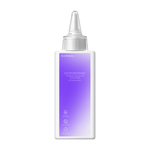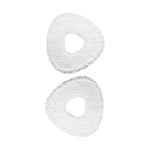Can robot vacuums clean effectively at night? Yes, they can, but their performance depends on how well they handle low-light navigation, avoid obstacles, and operate quietly during overnight hours. If you're considering scheduling your vacuum for night cleaning, it's important to understand what affects its efficiency after dark.
This guide explains how robot vacuums navigate and clean in the dark, what limits their performance at night, and practical tips to improve nighttime results. It also recommends a model designed for low-light use and compares key features that matter when choosing a robot vacuum for overnight cleaning.
Whether you're looking to clean while you sleep or simply make better use of off-peak hours, this article helps you pick the right robot vacuum and use it effectively at night.
How Robot Vacuums Navigate and Clean in the Dark
At night, your robot vacuum relies on a mix of sensors and mapping systems to navigate and clean effectively. These include bump sensors to detect physical obstacles, cliff sensors to avoid falls, and optical sensors to track movement across different surfaces. More advanced models use SLAM (Simultaneous Localization and Mapping) to build and update a virtual map of your home, allowing precise cleaning even with limited light.
Infrared sensors help the vacuum detect nearby objects by emitting and receiving invisible light signals, while LiDAR uses laser beams to scan the environment in detail. Together, they ensure accurate navigation in total darkness. Some vacuums can also adjust their sensor behavior based on ambient light levels, switching to infrared or LiDAR when natural light is insufficient. With these technologies working in sync, robot vacuums can clean confidently through the night.
What Limits Robot Vacuums at Night?

Robot vacuums can clean at night, but their performance may face limitations. From navigation errors in low light to battery life issues and missed obstacles, several factors can affect how well a robot vacuum works after dark. Below are the main challenges to expect during night cleaning.
Navigation Errors in Low Light
Even with advanced sensors, robot vacuums can struggle to navigate in low-light conditions. Infrared and LiDAR systems help, but they may not match the precision achieved under daylight. This can lead to missed spots or inefficient pathing. Keeping your vacuum’s firmware updated and choosing a model with high-accuracy navigation can help reduce these issues.
Obstacles and Hazards
Objects like toys, cords, or pet bowls left on the floor may go undetected at night. Vacuums may also misjudge small drops or uneven surfaces, increasing the risk of getting stuck or falling. Clearing the floor before bedtime ensures a smoother cleaning process and prevents potential damage.
Battery Life and Charging Needs
Night cleaning puts demands on battery life, especially in larger homes. If the battery is not fully charged or the vacuum is set to high power modes, it might not complete the job before returning to the dock. To avoid interruptions, make sure the device starts with a full battery and schedule charging cycles during the day.
Are There Performance Differences at Night?
Yes, robot vacuums can perform differently at night compared to during the day. Key differences include potential challenges, variations in cleaning efficiency, and noise levels.
Potential challenges faced at night
At night, reduced visibility can lead to navigation errors, missed spots, and difficulties detecting small obstacles. Even with advanced sensors, low light can impact the vacuum's ability to clean effectively.
Cleaning efficiency
Cleaning efficiency might decrease at night. Better lighting during the day helps the vacuum's sensors work more accurately, ensuring thorough cleaning. At night, even with advanced navigation systems, some areas might not be cleaned as effectively due to navigation errors. High-end models designed for low-light conditions tend to maintain better performance.
Noise levels and disturbance
Nighttime cleaning can cause noise disturbances. Even the quietest robot vacuums can be noticeable in a silent house, potentially disrupting sleep. Choosing a model known for its quiet operation can help minimize disturbances.
Tips for Running Your Robot Vacuum at Night
Running a robot vacuum at night can be convenient, but it works best with the right setup. Here are some practical tips to improve cleaning results and reduce potential issues when using your robot vacuum in the evening.
-
Clear the floor of small objects such as pet bowls, toys, or loose cables. This helps the vacuum move freely and avoid getting stuck.
-
Use Quiet Mode or a low-noise setting if available. This minimizes disturbance for light sleepers and makes overnight cleaning more comfortable.
-
Place the dock station in a quiet, low-traffic area. This reduces noise near bedrooms and allows the vacuum to return and recharge without interruption.
-
Schedule cleaning earlier in the night so it finishes before your household settles in. This avoids noise during sleep and ensures your floors are clean by morning.
Which Robot Vacuum Is Recommended for Nighttime Use?
If you often rely on your robot vacuum to clean while you sleep, Narwal Freo Z10 Ultra is worth considering. It combines powerful cleaning with advanced navigation features that help it perform reliably at night.
[cta:narwal-freo-z10-ultra-intelligent-in-mind-deep-in-clean]
Why Narwal Freo Z10 Ultra fits night cleaning:
-
Sees in the dark: Dual 136° wide-angle RGB cameras with AI chips recognize over 200 types of household objects—even small, low-profile items like cables, slippers, and pet bowls—in low-light conditions.
-
Accurate navigation: LiDAR 4.0 and real-time 3D mapping help the vacuum move smoothly across rooms, avoid unexpected obstacles, and maintain consistent pathing in the dark.
-
Quiet operation: Its low-noise design minimizes disturbances, making it suitable for evening or overnight cleaning in shared living spaces.
-
Strong performance on all surfaces: With 18,000Pa suction, automatic mop lifting, and dirt sensors, it adapts to different floor types and cleans both dry and wet messes efficiently.
-
Self-maintaining: After each cycle, the vacuum automatically empties dust, washes and dries the mop, and resets for the next job—ideal for users who schedule unattended night cleaning.
If you’re looking for a vacuum that can clean intelligently and quietly at night without supervision, the Freo Z10 Ultra delivers a reliable, hands-free experience tailored for real homes.

Choosing the Best Robot Vacuum for Night CleaningConclusion
Robot vacuums can be a practical solution for busy households, especially when scheduled to clean at night. While most modern models are equipped to handle low-light environments, not all perform equally well. Factors like navigation accuracy, noise levels, and obstacle detection matter more after dark.
The Narwal Freo Z10 Ultra stands out as a strong option for nighttime cleaning. Its intelligent sensors, quiet operation, and hands-free maintenance features make it a reliable choice for overnight use—especially in Australian homes with open spaces and mixed flooring.
To find a model that suits your night routine, explore our robot vacuums that work well at night or visit the Narwal Australia official site for more details.




















































